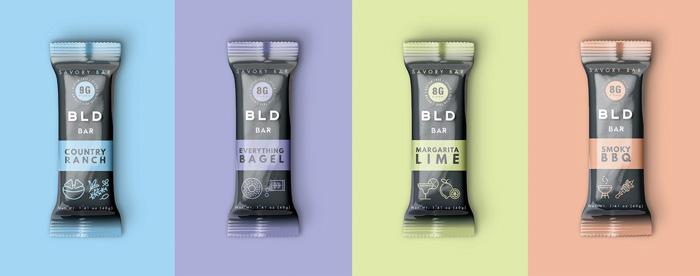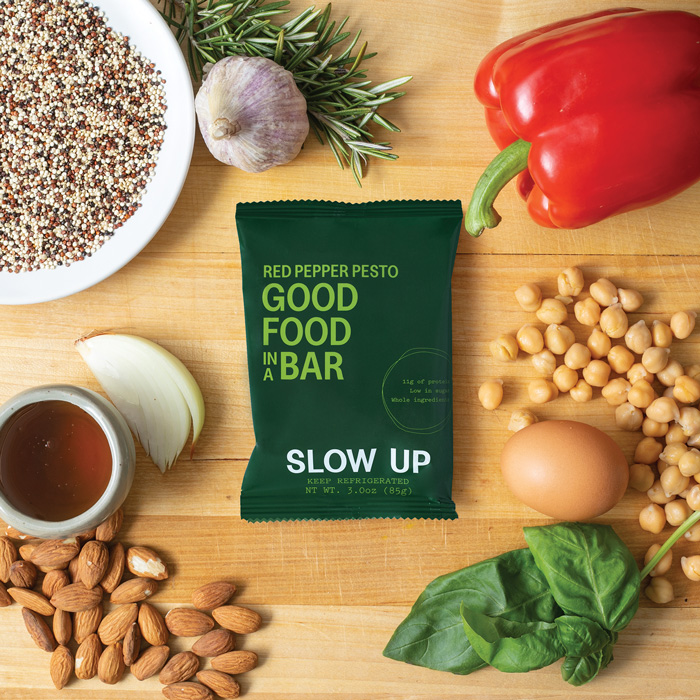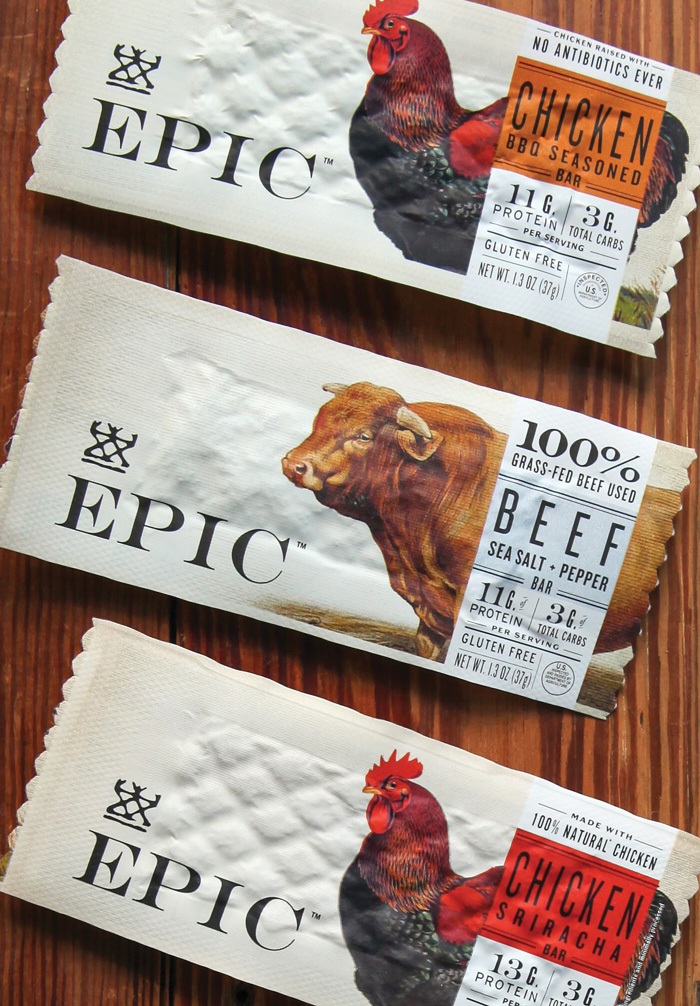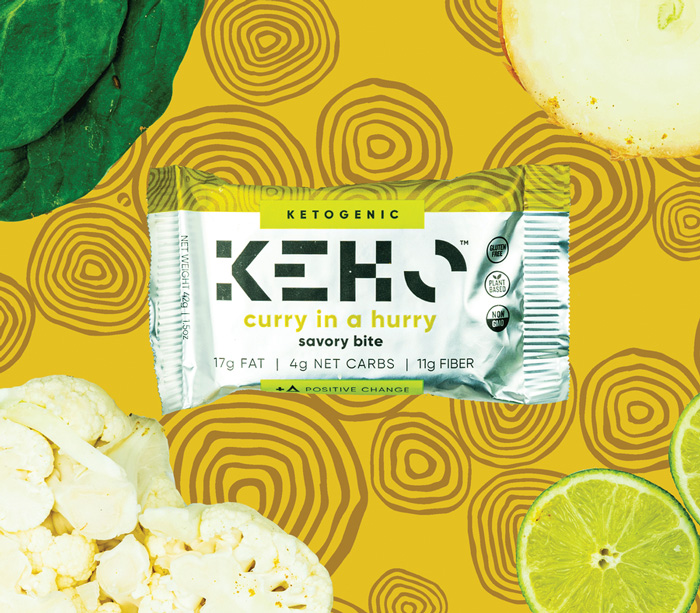
Savory Snack Bars Hit the Sweet Spot
Fresh ingredients, creative flavor combinations, and socially conscious marketing are transforming the savory snack bar space.
Article Content
Tekla Back was struggling to find a snack bar made of whole, plant-based food that satisfied her yen for savory taste. Although many bars on the market touted healthy ingredients, the majority catered to snackers with a sweet tooth, using carb-heavy ingredients, such as honey, to hold the bars together. That’s when Back, a former executive at PepsiCo with a doctorate in physics from Oxford, decided to take matters into her own hands.
Three years of testing and tasting later, Back’s company, KEHO (a word meaning “living human body” in Finnish), was born. An innovator in the growing savory snack bar category, KEHO boasts a line of whole food savory snack bars made with freeze-dried veggies, nuts, and healthy fats.
“We took real food and made it into real snack food,” says Back. “There are four snack bites: Curry in a Hurry, Tex-Mex Moment, Pizza to Go, and Thai Me Over. Each bite is a mini-meal, made with recipes inspired by global cuisines.”
Back’s venture is emblematic of a growing breed of snack bar makers that are swapping out traditional sweet flavors for savory combinations that center around plant-based and meat ingredients. With the snack bar category continuing to expand and find new avenues for innovation, proponents are banking that savory bars will play heavily into the mix.
“As countries continue to gain mobility, snack bars will have a resurgence across the globe,” predicts Sally Lyons Wyatt, executive vice president and practice leader at IRI Worldwide. Although the category declined in the United States in 2020 by 3% in total omnichannel dollar sales, Lyons Wyatt points out that as of mid-September 2021, omnichannel dollar sales were up 6.3% versus a year ago and 4.6% versus 2019. “This means that not only have bars found paths for growth but at an elevated status versus pre-pandemic,” she says.
Ranjana Sundaresan, lead research analyst at Spoonshot, also predicts a sunny outlook for the category, especially when it comes to savory bars. “Over the next 12 months, we expect to see significantly greater buzz around savory snack bars, with projected interest in the space growing by nearly 250%, albeit from a low base,” he says. “In comparison, the snack bar category as a whole is projected to see interest expand by 16% over the coming 12 months.”
Something for Everyone
One appeal of savory bars is their ability to satisfy a wide range of consumer preferences, whether specific lifestyles and diets—such as keto, paleo, gluten-free, plant-based, or low-sugar—or cravings for new and innovative flavors. They’re also aiming to balance post-pandemic demands for both healthier options and those centering on indulgence.
“The bars universe today, including the innovation that has hit the market recently, provides consumers with options for both indulgence and health,” says Lyons Wyatt. “We see flavors, textures, and forms being key for appealing to consumers who want indulgence. The healthy alternatives are appealing to consumers aligned to specific functional and/or dietary needs. This includes ‘on trend’ functional ingredients, whether positioned to address a need (e.g., after workouts) or aligned to diets (e.g., keto), etc.”
For Back, social media has played a key role in identifying and responding to the needs of KEHO’s customer base, which she describes as “early adopters, initiators, and doers” who “prefer real whole foods but eat packaged for ease, and so are hungry for innovation to experiment and try.”
At Sheffa, co-founders Leslie Angle and Amotz Geshury take a simple but focused approach to promoting their products. Their savory bars have no added sugar, fruits, or sweeteners and are gluten-free, vegan, non-GM, and kosher. Available in four versions—Everything Savory, Sesame Savory, Rosemary Savory, and Spicy Chili Savory—the bars consist of 100% whole grain brown rice partnered with quinoa, millet, and amaranth, then boosted by chickpeas, sunflower seeds, and a touch of olive oil. The bars, which total 150 calories for a two-bar serving, can be eaten alone, paired with soup or salad, or used with hummus, spreads, cheese, chutney,
or jam.
“There’s definitely a plant-forward outlook to savory bar launches given the growing interest in this space, driven by health and sustainability concerns,” says Sundaresan, who cites Spoonshot research that consumer interest in plant-based food and drink has grown by over 600% since 2016. In addition to vegetables like cauliflower, spinach, mushrooms, and tomatoes in KEHO’s lineup, nuts and grains “translate well into the savory space,” he adds, “offering significant nutrition and satiety.”
Another category entrant, Slow Up, is the creation of Executive Chef Caroline Schiff. The bars are made from quinoa, chickpeas, nuts, and spices. Among the savory varieties in the eight-flavor line are Red Pepper Pesto, made from a mix of chopped basil, oregano, and rosemary along with fire-roasted red peppers; Poblano Black Bean, a mix of poblano peppers and sweet corn with seasonings like smoked paprika and cumin folded in; Sesame Ginger, made with toasted sesame seeds and fresh ginger with a pop of lime juice; and Calabrian Chili Lemon, which combines Calabrian chili peppers with honey and lemon zest.
Mini Meal Replacement
A common selling point of many savory bars is their positioning as a bite-sized meal rather than as a snack. Spoonshot’s Sundaresan explains, “With ingredients like vegetables and herbs and spices, savory snack bars offer the opportunity for a more solid expansion into the meal replacement space in place of the more dessert flavor options.”
For Anish Vanmali, who launched a Kickstarter campaign in June 2021 to fund his company, BLD Bars, the idea of a meal in a bar was at the center of his mission. “The concept behind BLD Bars was to shake up the current bar market and create a concept that was out of the box,” he says.
Scheduled to debut in November 2021, BLD Bars are designed “to create a solution to two major problems,” says Vanmali, namely, “products that resemble candy bars but are disguised as healthy,” and to provide an alternative for consumers who “don’t want something sweet right when they wake up or for a late-night snack.”
BLD bars contain less than 2 grams of sugar per bar and are free of preservatives. The vegan meal replacements come in Country Ranch, Smoky BBQ, Margarita Lime, and Everything Bagel.
Bring on the Meat
A defining characteristic of savory bars is their protein content, according to Sundaresan, who notes that “32% of all snack bar launches call out the nutrient.” And although plant-based bars can deliver protein with ingredients such as peas and chickpeas, some consumers prefer to get their protein from meat.
“Meat-based bars have come a long way from jerky,” says Sundaresan. “We’re seeing a range of premium options that focus on different meats, cuts, flavors, and protein content. Sustainability is also an emerging trend here, with a few products calling out their environment-friendly credentials for a product generally considered not great in terms of carbon emissions and resource use.”
Among the pioneers in the meat-based savory snacking space is EPIC, which features beef, chicken, bacon, bison, venison, and salmon in its line of paleo-friendly snack bars. In addition to a variety of flavor combinations, the company touts its commitment to sustainability, stating on its website: “Our foods are called EPIC to reflect the mission to improve the lives of animals, support human health, and help heal the land.”
Founded by former vegetarians who struggled with a myriad of inflammatory ailments brought on by a diet high in carbohydrates and low in fat, the company has adopted a whole food approach to its snack bars, incorporating grass-fed protein, healthy animal fats, and dried fruit, nuts, seeds, and creative spice blends. The result is an array of flavor combinations, including Bison Bacon Cranberry, Chicken Raisin Sesame, Wild Boar With Bacon + Cranberry, Beef Apple Bacon, Venison Sea Salt Pepper, and Beef Habanero Cherry Walnut.
Brave Good Kind is another brand marketing mission-based claims, namely, to “responsibly nourish the world with sustained positive energy.” Launched by K2 Ventures in the midst of the pandemic, Brave Good Kind products were designed to capitalize on the popularity of meat bars for their nutritional value and as meal replacements. Eschewing beef for chicken, the company debuted Tender Chicken Bars last spring. Available in Original, Hot Honey, and Teriyaki versions, the bars are made with antibiotic-free chicken and are positioned as a better-for-you snack that provides sustained energy.
Although many savory snack bar companies have launched within the past few years, the foundation for family-owned Jack’s Links was established in the 1880s, when Chris Link, ancestor of current CEO Troy Link, began creating sausages and smoked meats. Five generations later, the company continues to produce sausage, along with a variety of other protein snacks, including Jack Link’s Beef Strip Bars in Original and Teriyaki flavors. The bars are a keto-friendly snack that delivers 7 grams of protein per 70-calorie bar.
The Measure of Success
Although savory snack bars account for only about 2% of the snack bar category, according to data from Spoonshot, their growth potential is considerable. Not only do they have the ability to open up the category to a much wider range of flavors, including global cuisines, says Sundaresan, but “they have the potential to increase the positioning of snack bars as true meal replacements.”
For whole food–based bars, however, the appeal of fresh ingredients comes with challenges, including refrigeration requirements, shorter shelf lives, and cold chain infrastructure/space in stores. “These issues point to higher costs for manufacturers and higher price points for consumers,” explains Sundaresan, “which may defeat the purpose of the compact and mobile snack bar. Given the high risk of spoilage with such fresh products, it may be rather ahead of its time.
“That being said,” he adds, “there’s probably an audience for such products, especially given shifting consumer preferences for fresh food versus overly processed foods. Placing them in and around offices, especially now that many are going back into offices, may work as a way to get consumers familiar with these concepts. Promoting them as quick, mess-free meals to consume while at one’s desk or while on the go may also find appeal.”
In the fast-moving world of snack innovation, market responsiveness is paramount, believes IRI’s Lyons Wyatt, who sees agility as one of the keys to success. “Agility is needed to ensure the right assortment of bars are available in the right places at optimal times of day,” she explains. “Agility comes into focus when countries become more and more open because you need the ability to be everywhere consumers are to capitalize on snack occasions and impulse.”
Although savory snack bars were not able to overcome the loss of out-of-home consumption in 2020 and saw declines in the United States, Lyons Wyatt says the picture for 2021 is a bit brighter, noting that “we are seeing some segments of bars realizing growth in both small and large pack types. More communication is needed to remind people of all of the in-home and out-of-home occasions savory snack bars can be consumed.”
Differentiation is also important, observes Lyons Wyatt, especially with the wide selection of products currently available, including diet-focused formulations, meal-focused product lines, and snack bars featuring functional ingredients, plant-based proteins, and alternative sweeteners.
But Sundaresan believes there’s plenty of room for new approaches, citing innovative agricultural practices as an example of an evolving technology that will likely factor into future product development. “Meat grown through regenerative agriculture and other sustainable practices will start being called out a lot more in the coming years,” he says, “especially as consumers look for more responsible ways to consume meat.”
Whatever the future holds, product developers must continue to evaluate and respond to opportunities taking place, globally and locally, that help to elevate flavor, taste, and nutrition in the savory snack bar space. “The wide span of innovation,” says Lyons Wyatt, “shows that bars are poised to capitalize with differentiation, but only time will tell which ones will be truly successful.”
Key Takeaways
- Health and indulgence claims will contribute to a snack bar resurgence.
- High-protein, low-sugar savory bars are marketed as mini meal replacements.
- Both plant- and meat-based bars are being produced with sustainability in mind.














